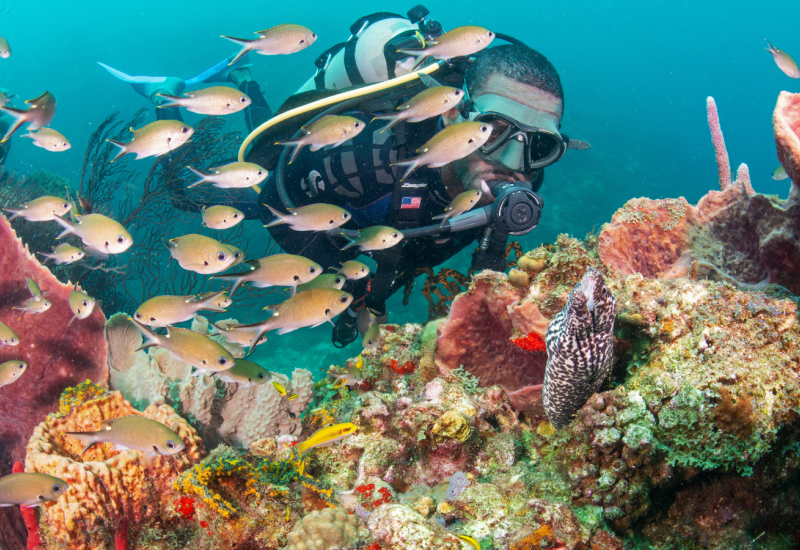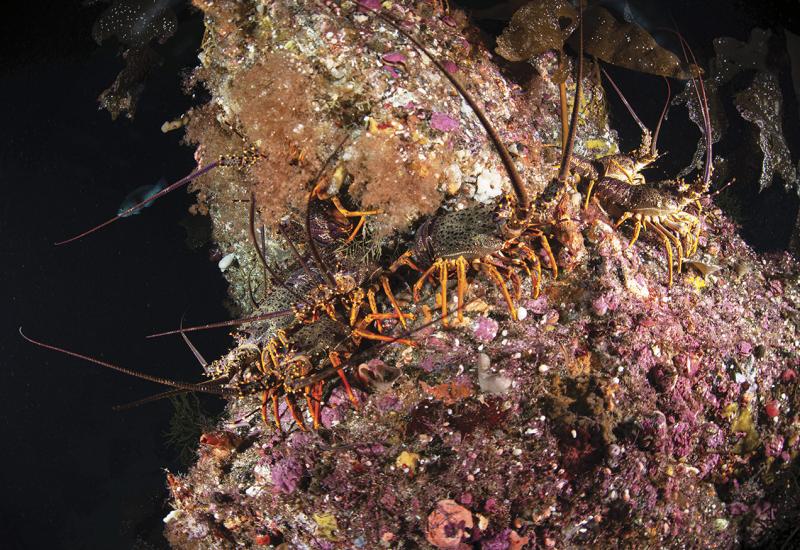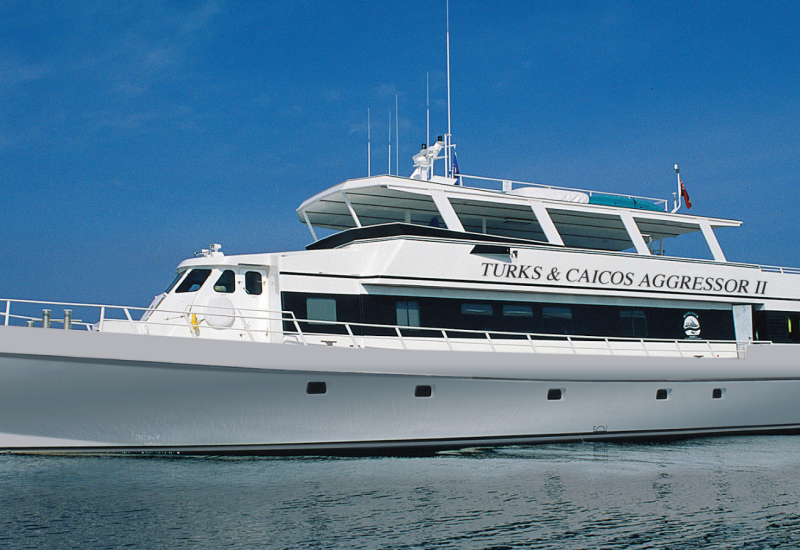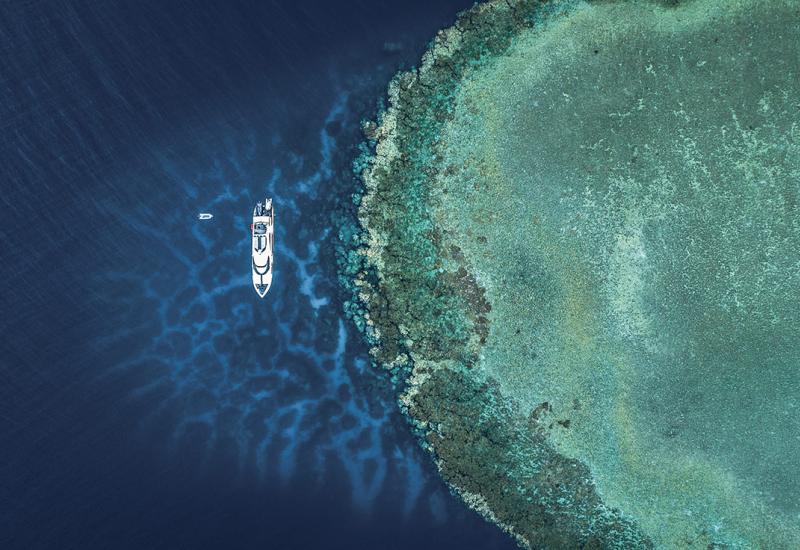Snorkeling With Manatees In West Florida

David Fleetham/Naturepl.comHow Now , Sea Cow
Bring your non-diving friends to snorkel with manatees in Florida, it may just set the hook.
Snorkeling is a gateway drug to scuba diving. Divers trying to initiate friends and loved ones to the mysteries of scuba have long turned to snorkeling as a low-barrier entry to the underwater world. But what if you want to throw big animals into the mix? That’s generally harder to pull off without depth, current or a long boat ride — with one hefty exception.
Enter the manatee.
A fully grown manatee cow can run 1,200 pounds and 10 feet long, which makes for a thrilling, up-close big animal encounter with the sweethearts of the sea, animals that may have given rise to sailing legends of mermaids and sirens, in an experience that’s accessible to virtually anyone. Bonus for Scuba Diving’s staff: Florida’s west-central coast is manatee country, an easy two-and-a-half hours from the magazine’s Orlando-based offices.
Florida’s (relatively) warm rivers and springs just north of Tampa provide an annual wintertime home for hundreds of these tubby snowbirds, who migrate to places like Homosassa, King and Three Sisters springs, and Crystal and Homosassa rivers, from November through March to rest and raise their calves and escape colder ocean temps. Manatees can live in salt, brackish and fresh water, but their perfect temperature range is a narrow one: Water temps as low as 68 degrees F can be lethal.
So on a chilly morning in January, my not-yet-certified niece and I head for Crystal River’s American Pro Diving Center. We had chosen its Homosassa River manatee snorkel tour, which is offered only in winter — boats are semi-enclosed, and hot chocolate is served — to a restricted number of guests per tour, fewer than on their year-round Crystal River manatee tours.
All manatee tour operators are required by the state to show visitors a video before manatee encounters explaining the rules of engagement, a video we watch at American Pro Dive’s expansive shop. While some of the video seems silly or obvious, just remember that somebody has actually harassed manatees in exactly the ways you are being cautioned against — standing on them, riding them, intentionally separating a mother and calf, the list goes on. Visitors caught disregarding the rules can be asked to leave protected areas.
After registering, our group hops back in our individual cars and follows American Pro Diving’s large pontoon boat as it’s trailered to a marina not far from the entrance to Homosassa Springs Wildlife State Park (an excellent place for nonswimmers to view manatees in season).

Alex Mustard/Nautrepl.comBreath Of Fresh Air
Snorkeling is the best and sometimes only way to encounter manatees.
We anchor in the river, which starts at the spring and ends about 8 miles west at the Gulf of Mexico. It’s shallower and slower than Crystal River, making it easier to view the manatees. However, it’s not uncommon in either place to find a tannic layer reaching down as much as a couple of feet from the surface before you get to those truly “crystalline” waters the region is known for. In these conditions, the manatees can see you just fine and will come very close — it can be a little disconcerting that you might not see the giant animal approaching you until a snuffling snout suddenly finds your hand. Ducking down below that tannic layer is forbidden, to try to prevent humans from provoking the sea cows out of view of rangers.
The divemaster leading our group — who also was filming a video available for purchase afterward; private cameras are allowed as well — had taken care to explain that he would enter the water first, once we spotted a manatee, and judge whether the animal seemed willing to be encountered.
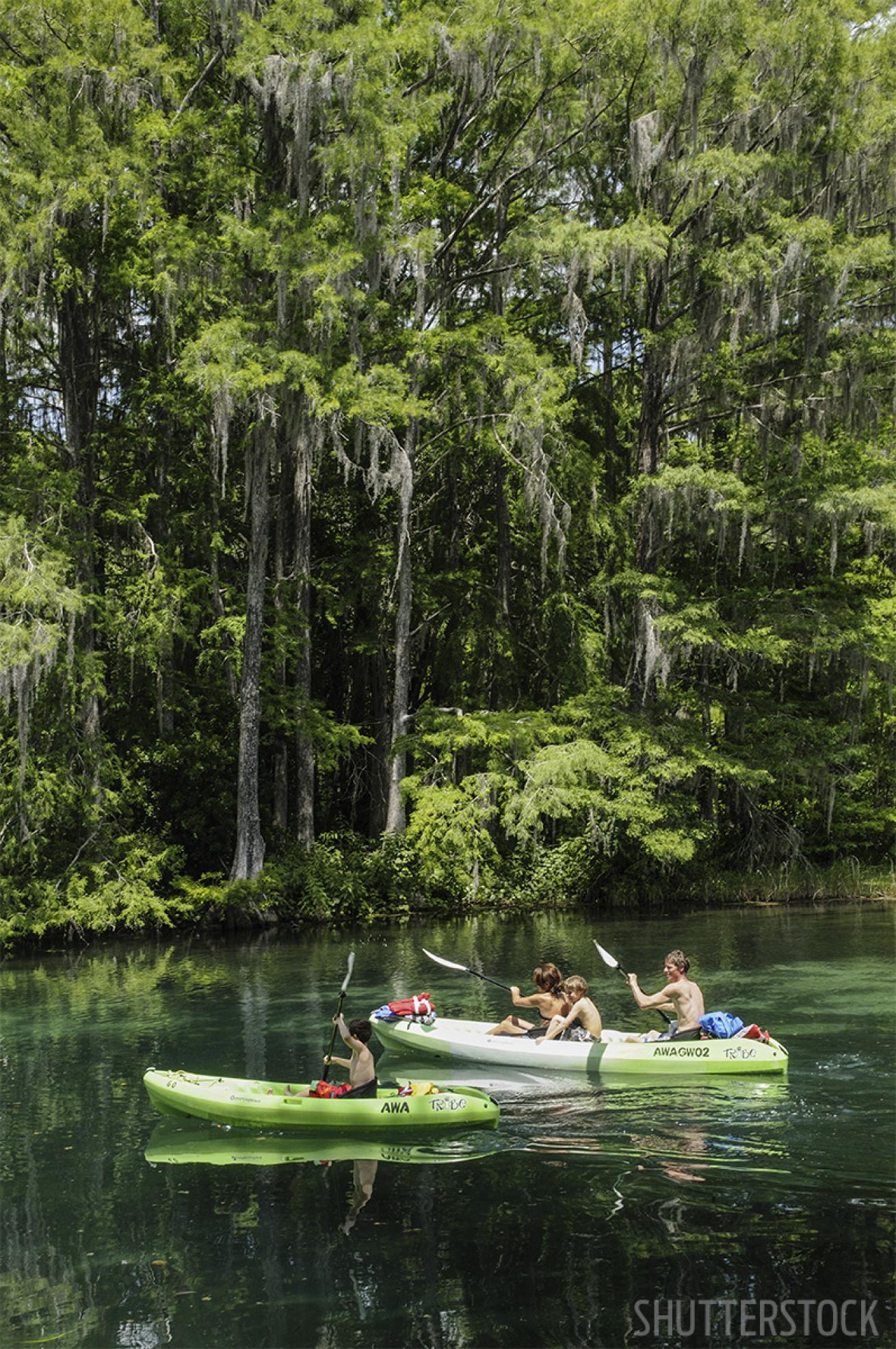
Shutter StockCrystal Cruising
There are many ways to explore West Florida's springs and rivers without getting into the water.
All goes according to plan — we spy manatees relatively quickly, and once he believes all is well with the animal, he motions us in — slowly, gently — and allows us to approach singly or in pairs. The look of happy wonder on my niece’s face as a manatee hovers level with her at the surface, head to head, for several minutes at a time is all the thanks I need for getting out of bed so early on a frosty morn.
While it might seem like scuba would be a much better way to view manatees, snorkel is not only an easy way to interact, it’s often the best or only way. Manatees in springs tend to be found in only a few feet of very clear water, where they’re easy to see from the surface; more important, they are very sensitive to sound and tend to avoid the disturbing noises created by scuba regulators.
(Divers with credentials in media, commercial photography and research can apply to the U.S. Fish and Wildlife Service for permits to scuba with manatees in the Crystal River National Wildlife Refuge. All of the commercial manatee tours open to visitors to this region are snorkel tours.)
As all manatee guides will tell you, it’s all up to the animals. If a manatee presents itself to you and elects to stay by your side, it’s perfectly OK to give it a little scratch or rub; they seem to relish the encounters as much as humans do. Most animals will remain at or near the surface only for a limited time — manatees are mammals that must surface to breathe — sinking to the bottom to munch or perhaps just to take a break. Unfortunately for photographers, those movements can raise clouds of silt from the bottom; mind your fins, so you are not increasing that muddy cloud in shallow water.
Just remember, when the manatee decides it’s over, it’s over. The will of the animal must always be respected.
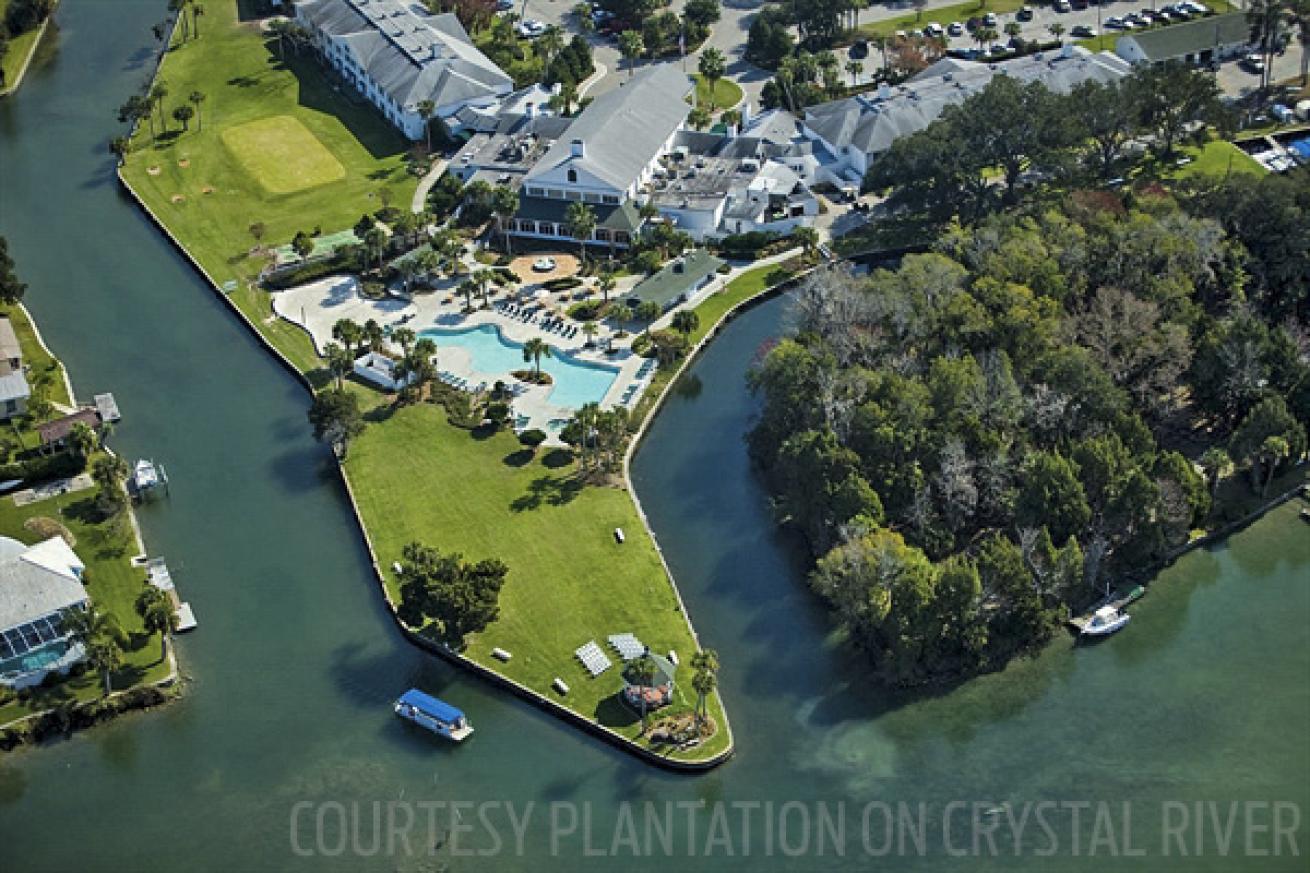
Courtesy Plantation on Crystal RiverA Slice of Old Florida
Stay the night at the 50-year-old Plantation on Crystal River so you can get to the manatees first thing in the morning.
Need To Know
When To Go: The Crystal River region of Florida is one of the only places in the world where you can be in the water with manatees year-round. However, the highest concentration is found in springs and shallow rivers November through March. Off -season might produce fewer manatees — about 30 are resident in the refuge — but it’s not uncommon to see three or four at any time of year. Conversely, in a warm winter, there’s no guarantee of seeing manatees en masse, even in season. When temperatures rise even a bit, manatees move out to find sustenance in areas like Homosassa and Crystal rivers.
Dive Conditions: Manatee encounters are done on snorkel; the springs and rivers they favor in winter are a more-or-less constant 72 degrees F year-round, so a 5 mm to 7 mm wetsuit is good. Visibility can be nearly unlimited in the springs but less good in rivers that can have a darker, tannic layer.
Operators: All manatee tours are operated by permit and follow the same protocols. Some of the most established operators include Birds Underwater Dive Center, American Pro Diving Center and the dive shop at the Plantation at Crystal River.
Price Tag: Tours range from $30 to $90, depending on whether gear rental and lunch are included; tours with restricted numbers of snorkelers are on the higher end but worth it.
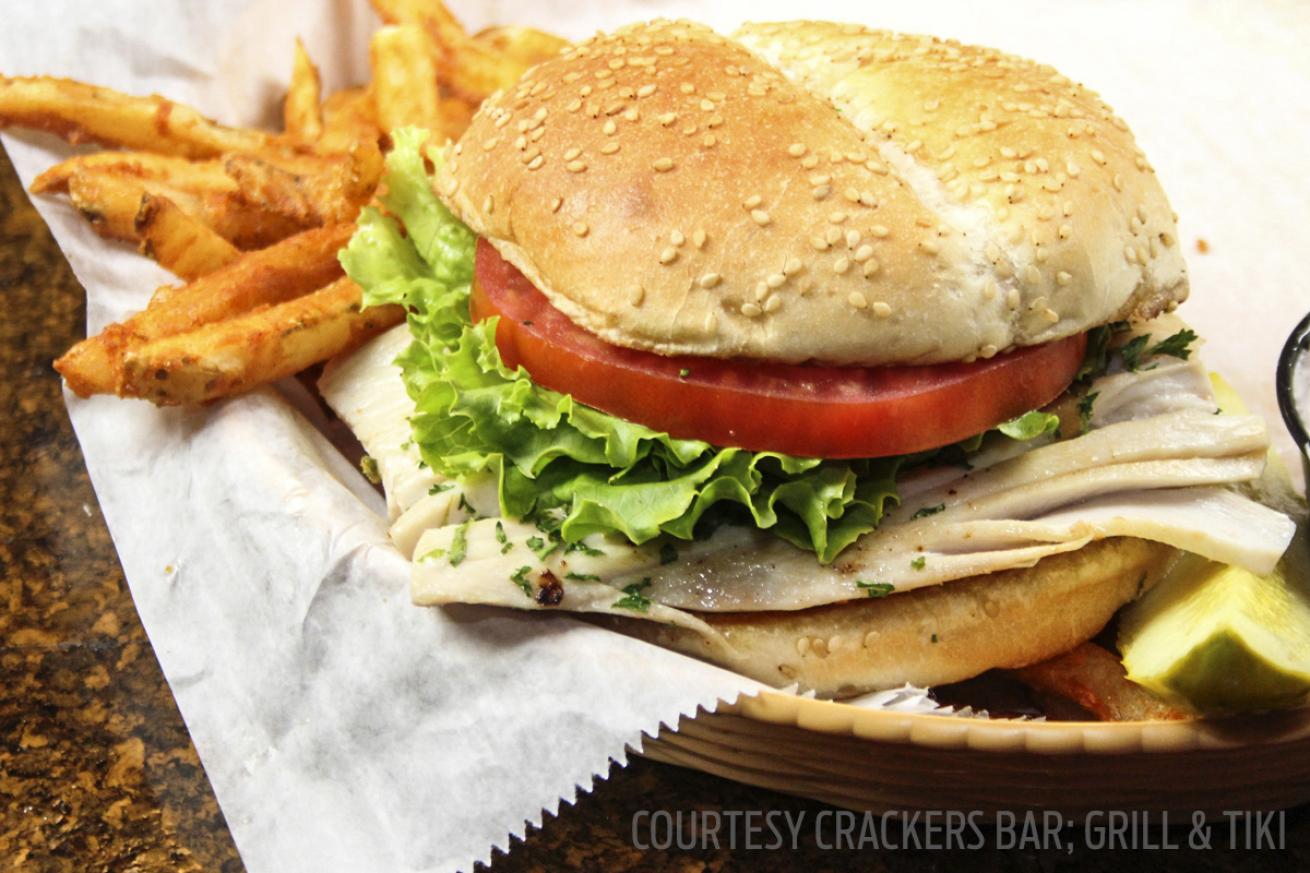
Courtesy of Crackers Bar, Grill & TikiChow Time
Warm up after your dive with a late lunch at Crackers Bar, Grill & Tiki
Itinerary
Day One Improve your odds of alone time with a manatee and plan your visit for weekdays in January. Book yourself an overnight at 50-year-old Plantation on Crystal River, an eco-friendly resort on Kings Bay that’s a little slice of Old Florida.
Manatee tours are best first thing in the morning, so once you’re checked in, use the afternoon to explore the Plantation’s boating, kayaking, fishing, golf and spa. For dinner, experience authentic Florida cuisine like crab and mango ceviche or shrimp and grits at the hotel’s West 82º Bar & Grill, with sunset river views.
Day Two: Get an early start on a manatee tour with Plantation’s Adventure Center dive shop, Birds Underwater Dive Center or American Pro Diving Center, all based in the small town of Crystal River. Warm up afterward with a late lunch and a few well-earned libations at waterfront Crackers Bar, Grill & Tiki on Kings Bay.
Day Three: Get in a real dive at Rainbow River, a beautiful springs run that’s a lovely 1-knot drift dive. All of the manatee operators do Rainbow; pontoon boats put in at K.P. Hole Park in Dunnellon, an easy 20-mile drive from Crystal River. After motoring up the run, divers are dropped into a crystalline, shallow river with a bottom of undulating sea grasses full of diving birds, turtles, crabs and fish, dotted with small white sand boils right in the run. Afterward enjoy lunch at riverside Blue Gator Tiki Bar and Restaurant in Dunnellon.

